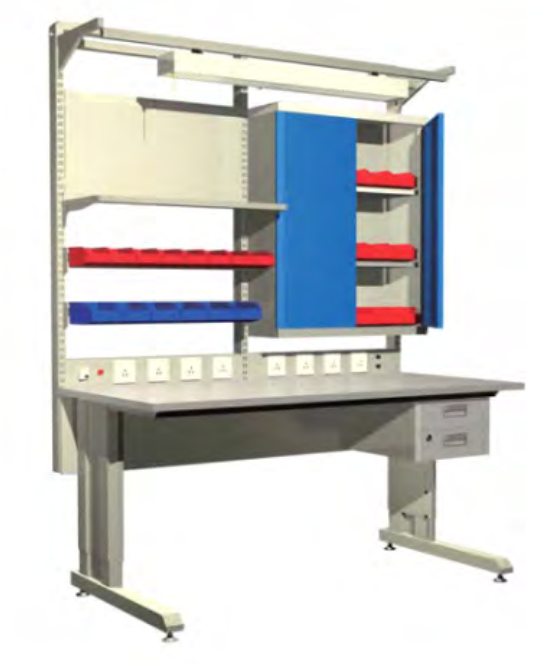Aerospace manufacturing faces substantial danger from electrostatic discharge (ESD) since minor electrical disturbances in this sector trigger catastrophic failures. Satellite technology components stand as the most vulnerable spacecraft elements to electrostatic discharge (ESD). ESD workbenches serve as essential tools in manufacturing because their design purpose includes stopping static charge buildup before dangerous component damage occurs. The research examines aerospace manufacturing ESD workbench applications and details NASA requirements together with military specifications and showcases their use with EMI shielding and satellite assembly assembly.
NASA Standards and Military Specifications
The aerospace manufacturing industry operates under essential standards and specifications which must always be maintained. The prevention of ESD-related failures receives detailed instructions from both NASA and military standard protocols. NASA-STD-8739.6 defines what both requirements and guidelines need to be implemented for ESD control measures inside manufacturing areas. The standard emphasizes that proper ESD protection depends on workplace grounding systems together with suitable material choices for surfaces as well as anti-static clothing and tools.
The MIL-STD-1686 stands among military specifications that provide complete guidance about ESD control practices. This standard outlines procedures for ESD-sensitive device handling, storage, and transportation. The implementation of ESD compliance requires staff ESD education and installation of ESD-safe flooring and workstations with proper storage components in aerospace facilities.
EMI Shielding
EMI Shielding
EMI (electromagnetic interference) stands as a major issue throughout aerospace production activities. When EMI affects electrical and electronic systems their performance declines thus resulting in potential malfunctions or complete system failures. EDS workbenches achieve their function in EMI risk mitigation through their shielding capability which minimizes electromagnetic signals.
There are conductive materials used for EMI shielding on surfaces and enclosures that make up proper ESD workbenches. A Faraday cage effect is enabled by these materials to generate a shield that contains electromagnetic fields inside the workbench area thus protecting nearby sensitive equipment. The protective component proves vital for testing and calibrating satellite component work because device performance can be substantially affected by minimal EMI.
Satellite Component Assembly
The manufacturing industry faces its highest precision needs when assembling spacecraft components. The assembly process demands that circuit boards sensors and communication modules receive precise treatment to stop ESD-induced damages. The functionalities of ESD workbenches involve grounded mats in combination with wrist straps alongside ionizing blowers to keep components safe throughout handling and assembly operations.
The workbench environment should be properly managed for humidity because low moisture levels intensify static charge accumulation. The use of suitable illumination systems combined with amplifying tools is standard on ESD workbenches to help technicians maintain safe component handling of small delicate objects.
High standards of cleanliness during satellite piece construction exist to defend against the presence of contaminants. The cleanroom functionality of an ESD workbench relies on multiple components including air filters and non-static emitting components which prevent contamination from particulate matter.
Conclusion
ESD workbenches prove essential for aerospace manufacturing because aerospace operations face zero-tolerance errors in their field. NASA standards and military specifications provide aerospace facilities with the tools needed to develop environments which prevent ESD and EMI risks effectively. ESD workbenches provide strategic solutions that reduce satellite component assembly risks which guarantees the safety and reliability of aerospace devices. The existence of knowledge regarding and adherence to these standards leads aerospace devices to succeed in their missions yet safeguards them from catastrophic failure.







